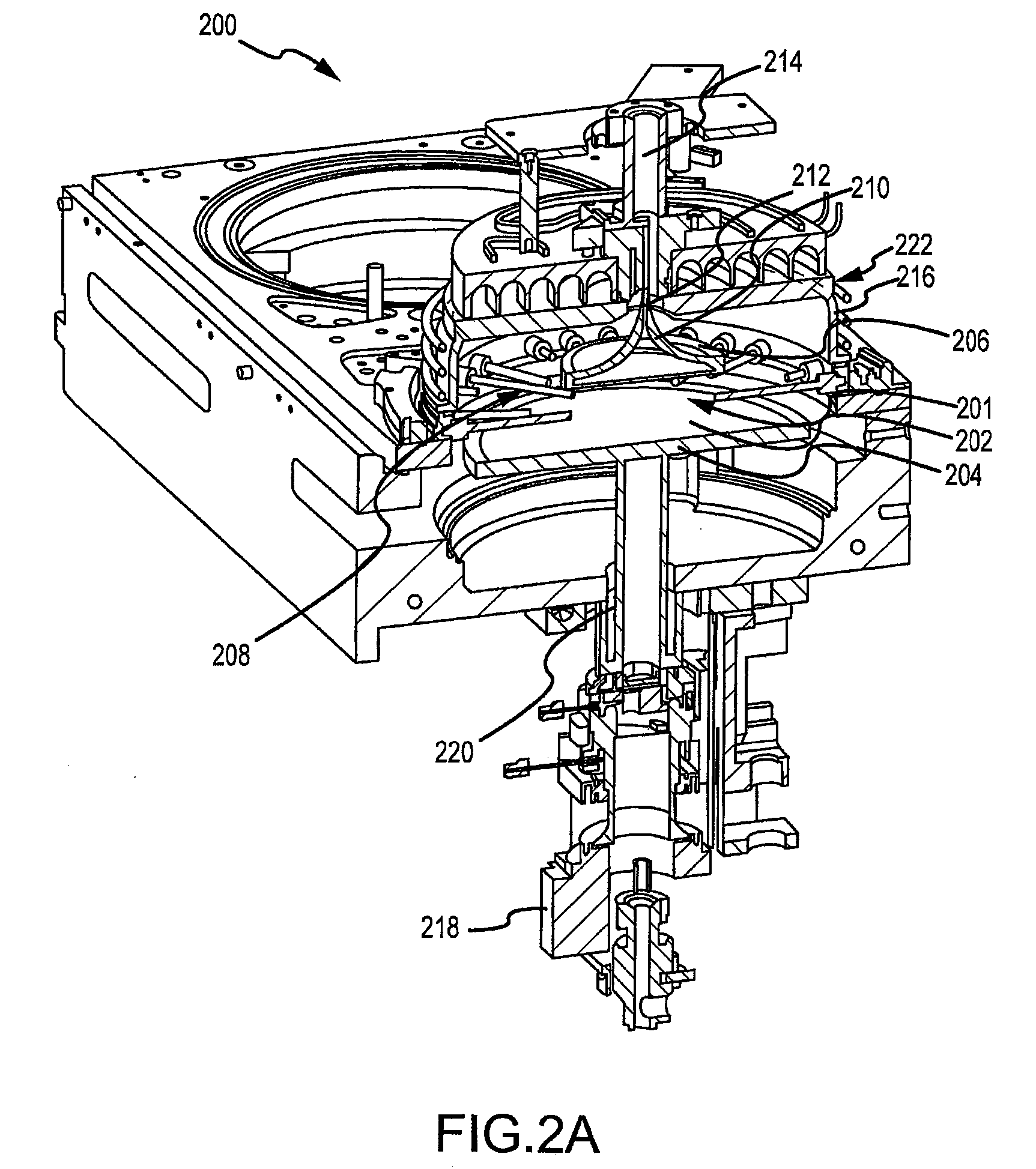Process chamber for dielectric gapfill
a dielectric gap and process chamber technology, applied in the field of dielectric gap filling process chambers, can solve the problems of difficult to fill tall and narrow gaps,
- Summary
- Abstract
- Description
- Claims
- Application Information
AI Technical Summary
Benefits of technology
Problems solved by technology
Method used
Image
Examples
Embodiment Construction
[0039] Systems are described for depositing a flowable CVD dielectric film on a substrate. These dielectric films may be used for STI, IMD, ILD, OCS, and other applications. The systems may include a reactive species generation system that supplies reactive radical species to a deposition chamber, where the species chemically react with other deposition precursors and form a flowable film of dielectric on a deposition surface of the substrate. For example the system may form a layer on a substrate from excited oxygen by a remote plasma source and organo-silane types of precursors. The systems may also include substrate temperature control systems that can both heat and cool the substrate during a deposition. For example, the flowable oxide film may be deposited on the substrate surface at low temperature (e.g., less that 100° C.) which is maintained by cooling the substrate during the deposition. Following the film deposition, the temperature control system may heat the substrate to...
PUM
| Property | Measurement | Unit |
|---|---|---|
| temperature | aaaaa | aaaaa |
| temperature | aaaaa | aaaaa |
| diameter | aaaaa | aaaaa |
Abstract
Description
Claims
Application Information
 Login to View More
Login to View More - R&D
- Intellectual Property
- Life Sciences
- Materials
- Tech Scout
- Unparalleled Data Quality
- Higher Quality Content
- 60% Fewer Hallucinations
Browse by: Latest US Patents, China's latest patents, Technical Efficacy Thesaurus, Application Domain, Technology Topic, Popular Technical Reports.
© 2025 PatSnap. All rights reserved.Legal|Privacy policy|Modern Slavery Act Transparency Statement|Sitemap|About US| Contact US: help@patsnap.com



